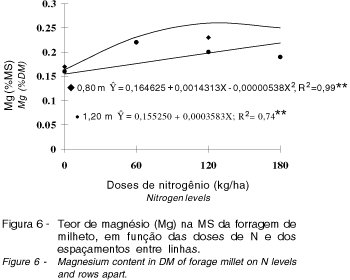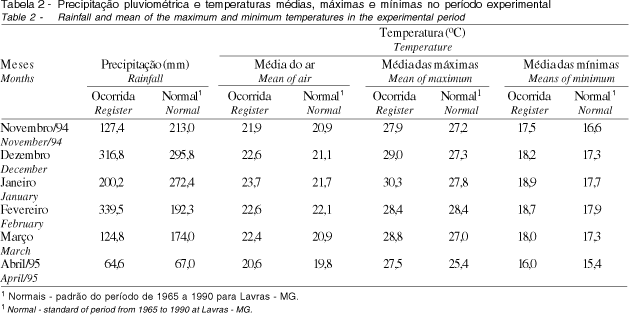A field trial was carried out to evaluate the effect of nitrogen (N) levels (0, 60, 120 e 180 kg/ha) and sowing methods (broadcast and .40, .80, and 1.20 m between rows) on dry matter yield (DMY), tiller densities and crude protein content, and minerals (P, K, Ca and Mg) of the material of post harvesting of the millet seed. A completely randomized block experimental design with the treatment in a split plot arrangement was used, with the sowing methods on the main plots and N doses on split-plots. The increasing N levels affected the DMY and crude protein yield (CPY), number total of tillers (NTT), and Mg content of the forage dry matter (DM). However, the response changed according to the sowing methods. The highest DMY and NTT were observed in sowing methods with 0.40 m between rows. The highest DMY (8872 kg/ha) was observed with 120 kg N applied, and the highest CPY (668.8 kg/ha), with 180 kg/ha N. In the sowing method with 0.80 m between rows the Mg contents in the millet DM quadraticly increased, while in the sowing methods with 1.20m between rows the concentration of the mineral linearly increased.
crude protein; dry matter yield; mineral composition; row spacing; tiller density








